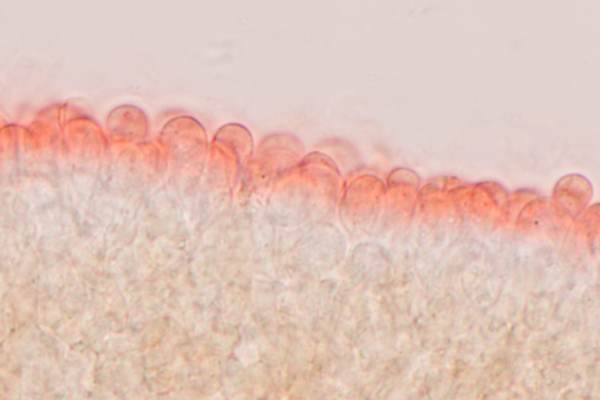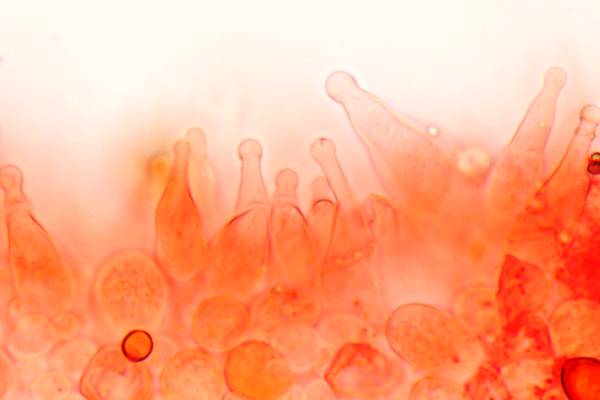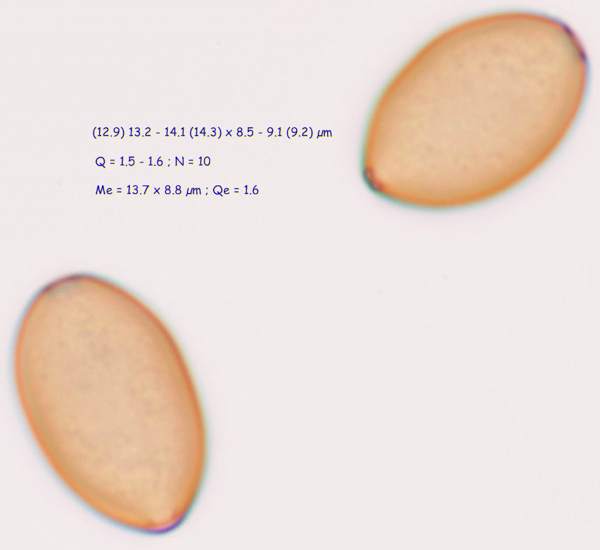Agrocybe pediades (Fr.) Fayod - Common Fieldcap
Phylum: Basidiomycota - Class: Agaricomycetes - Order: Agaricales - Family: Strophariaceae
Distribution - Taxonomic History - Etymology - Identification - Culinary Notes - Reference Sources
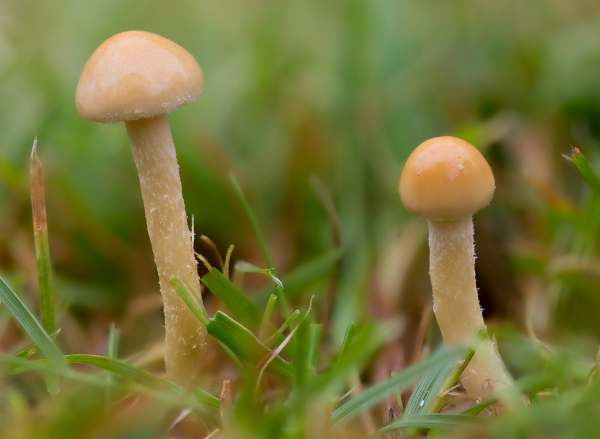
A v ery variable little mushroom of lawns and other grassy places, Agrocybe pediades is easily confused with may other little (pale) brown mushrooms; however, its occurrence in springtime and the lack of a stem ring are important clues when trying to make an identification.
Several of the fieldcaps can have pale caps, at least when young, and most of them become slightly paler with age of when they dry out, so accurate identification requires careful checking of all macroscopic and microscopic characters.
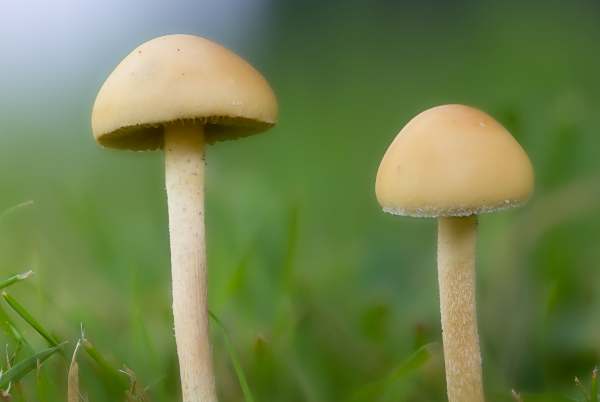
Distribution
An occasional find in most parts of Britain and Ireland, Agrocybe pediades occurs also throughout northern and central mainland Europe and in North America.
Taxonomic history
When Elias Magnus Fries described this mushroom in 1821 he gave it the scientific name Agaricus pediades. (Most of the gilled mushrooms were included initially in the genus Agaricus, the contents of which has since been largely dispersed into many other newer genera.)
It was the Swiss mycologist Victor Fayod (1960 - 1900) who, in 1889, transferred this species to the genus Agrocybe (which Fayod himself first proposed in 1889), thereby establishing its currently-accepted scientific name Agrocybe pediades.
Synonyms of Agrocybe pediades include Agaricus pusillus Schaeff., Agaricus semiorbicularis Bull., Agaricus pediades Fr., Agaricus arenicola Berk., Naucoria pediades (Fr.) P. Kumm., Naucoria semiorbicularis (Bull.) Quél., Agrocybe semiorbicularis (Bull.) Fayod, Naucoria arenaria Peck, Agrocybe arenicola (Berk.) Singer, Naucoria subpediades Murrill, Agrocybe arenaria (Peck) Singer, and Agrocybe subpediades (Murrill) Watling.
Etymology
Not all fieldcap fungi occur in open fields, but Agrocybe pediades is definitely a mushroom of fields of various sorts. (In the past this mushroom was occasionally referred to as the 'Common Fieldcap', and although many other Agrocybe species are more common than this species its common name in the British Mycological Society's list of English Names for Fungi is now Common Fieldcap. The term 'fieldcap' is derived from Agro-, of fields, and -cybe, head or cap, and is therefore a direct translation of the generic name Agrocybe. The specific epithet pediades means 'of the plains, or 'of the soil'.
Identification guide
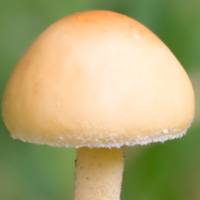 |
Cap0.5 to 3.5cm across, hemispherical or slightly conical becoming broadly convex; the yellow to ochre--yellow surface is smooth and greasy; slightly hygrophanous, drying slightly paler; margin of young specimens hung with small white cottony veil fragments. The cap flesh is white, turning gradually ochre. |
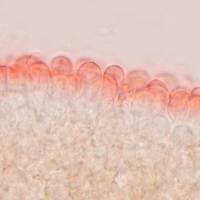 |
PileipellisThe cap of the Common Fieldcap is covered by a smooth gelatinous pileipellis that lacks cystidia. |
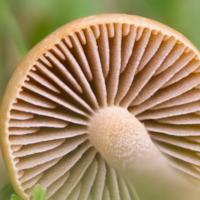 |
GillsAdnexed with a slight decurrent tooth; initially creamy beige turning grey-brown to rust-brown as the spores mature; gill edges of Agrocybe pediades are often paler than the gill faces. Stem3 to 5cm long and 2 to 6mm diameter; cylindrical, sometimes broadening slightly towards the base; whitish to pale ochre-yellow; pruinose; pale stem flesh, solid when young becoming hollow with age; usually without a stem ring or an obvious ring zone. Fine white rhizomorphs are often visible at the stem base. |
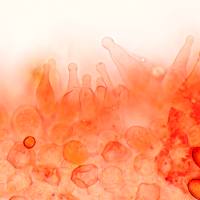 |
CheilocystidiaThe cheilocystidia (sterile hyphal protrusions from the gill edges) are 25-65µm tall and 7-11µm in diameter at the broadest point; their shape is lageniform (flask-shaped) to ventricose (swollen on one side), with constricted or capitate (roundish knob-like) tips.
PleurocystidiaThese are the cystidia that stand out from the gill faces. In Agrocybe pediades they are similar in size and shape to the cheilocystidia but very sparse. |
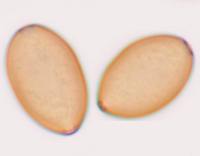 |
BasidiaClavate, 30-33 x 11-13µm, four-spored; with a basal clamp. SporesEllipsoidal, smooth, 9.5-15 x 7-9.5µm, with a germ pore and a small hilar appendage.
Spore printDark brown. |
BasidiaFour spores per basidium; basal clamps are present. |
|
Odour/taste |
Faint, farinaceous (floury). |
Habitat & Ecological role |
The Common Fieldcap Agrocybe pediades normally fruits in groups and is rarely solitary; it is saprobic and appears on lawns, in pastureland and in grassy parkland. This mushroom is also found in coastal dune slacks. |
Season |
Fruiting in May, June and early July and again throughout the autumn months in Britain and Ireland. |
Similar species |
Agrocybe praecox, which occurs in spring and early summer, grows in grassland, on woodland edges and in woodchip mulch; it usually has a yellowish buff cap that becomes even paler with age, and nearly always it has a stem ring. |
Culinary Notes
Agrocybe pediades is easily confused with any number of seriously poisonous brownish mushrooms - for example Hebeloma mesophaeum - and so is best considered inedible and therefore avoided when gathering mushrooms to eat.
Reference Sources
BMS List of English Names for Fungi
Marcel Bon, (1980). Revision du Genre Agrocybe Fayod. Bulletin trimestriel de la Fédération Mycologique Dauphiné-Savoie, 76: 32-36. Bulletin de la Fédération trimestriel Mycologique Dauphiné-Savoie, 76: 32-36.
Funga Nordica: 2nd edition 2012. Edited by Knudsen, H. & Vesterholt, J. ISBN 9788798396130
Breitenbach, J. and F. Kränzlin (1984). Fungi of Switzerland, Volume. 4. ISBN 9783856042400
Paul M. Kirk, Paul F. Cannon, David W. Minter and J. A. Stalpers, (2008). Dictionary of the Fungi; CABI
Taxonomic history and synonym information on these pages is drawn from many sources but in particular from the British Mycological Society's GB Checklist of Fungi.
Acknowledgements
This page includes pictures kindly contributed by David Kelly.
Fascinated by Fungi. Back by popular demand, Pat O'Reilly's best-selling 450-page hardback book is available now. The latest second edition was republished with a sparkling new cover design in September 2022 by Coch-y-Bonddu Books. Full details and copies are available from the publisher's online bookshop...

